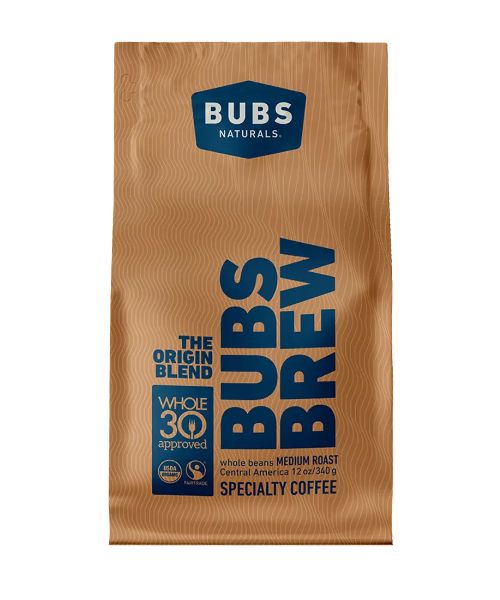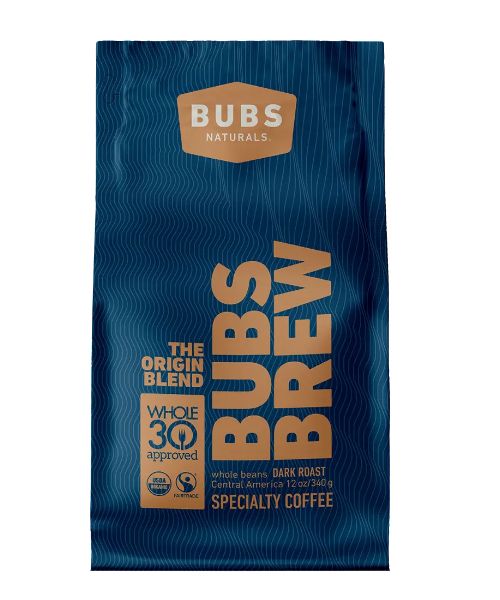“Do I seriously have to give up coffee in order to get clear skin?”
This is easily one of the most common questions I get regarding acne and diet, and luckily the answer is no.
The idea of giving up coffee in order to achieve clear skin terrified me when I started this journey. I don’t know about you, but I need my morning cup of joe in order to center myself for the day and win the morning.
Fortunately, you don’t have to completely give up coffee. While it’s true that coffee can trigger stress hormones that cause acne, it’s also loaded with antioxidants that can help prevent breakouts. With a few quick tips, you can make sure your coffee is GoodGlow-approved.
1. Use An Acne-Friendly Creamer
Not only is dairy creamer bad for acne, but so is most non-dairy alternatives.
Dairy is loaded with hormones, including IGF-1 and insulin, which contribute to every major root cause of acne:
- Excess oil production
- Clog pores
- Overproduction of skin cells
- Inflammation
Related: If you’d like to learn more about dairy and acne, read my article here.
Not all people have problems with dairy, but when it comes to acne, it’s one of the single worst food groups.
You might think that soy milk or almond milk is a better alternative, but unfortunately, most milk alternatives are loaded with unhealthy fats, sugar, and anti-nutrients, especially in the case of soy.
Organic, unsweetened coconut cream and coconut milk are the two safest alternatives for acne-prone skin:
- Low in carbs and sugar
- Low in omega-6 fatty acids
- High in magnesium and zinc
- Free of dairy hormones and antinutrients
With that being said, some people can handle dairy just fine. If you can, I’d recommend going with a heavy cream or grass-fed butter in place of milk. Ideally use dairy products that are raw, unpasteurized, organic, and grass-fed.
2. Go Sugar-Free
Think your latte or mocha is low in sugar? Think again. A vanilla latte has 35g of sugar in it. An iced mocha has 30g. To put it into perspective, a handful of blackberries has around 5g of sugar, and even an apple has 15g of sugar. These drinks come with all the sugar and none of the nutrients and fiber that make fruit skin-friendly foods.
Sugar is bad for your skin because it leads to a spike in the hormone insulin, which can trigger excess skin oil production, clog pores, and create inflammation.
Related: If you’d like to learn more about sugar and acne, read my article here.
The solution is to avoid putting sugar in your coffee or ordering sugar-filled coffee drinks. I know this might sound like an impossible task if you’re used to having sugar in your morning cup of joe, but trust me, it can make all the difference.
If you’re drinking coffee for its health and energy benefits, adding sugar is the last thing you want to do. It’ll make you more tired and less energized.
Instead, try adding cinnamon, ghee butter, coconut oil, or, as a last resort, a tiny bit of raw honey.
3. Choose the Right Beans
Some coffee beans are loaded with mold and are low in all the antioxidants that make coffee good for you in the first place. Pesticides and damaged soil can alter the makeup of coffee beans considerably.
For these reasons, going with a high-quality coffee bean is essential. Here’s what I look for:
- Organic (certified organic or passive organic is fine)
- Tested and confirmed to be mold-free
- Fresh – you don’t want moldy coffee sitting on your shelves for months. If you can, grind your own beans with a grinder
I don’t recommend getting coffee at most commercial coffee places. Instead, I recommend picking up your own high-quality beans at a local grocery store or roaster and grinding them at home.
Alternatively, you can buy coffee from a reputable online brand. My favorite options are the BUBS Origin Blend Dark Roast and the BUBS Origin Blend Medium Roast.
BUBS has some of the highest quality, reasonably-priced coffee beans available on the market. The beans come from fair trade and organic certified farms in Guatemala, Nicaragua and Honduras, and are tested and certified as mold-free. These USDA certified organic beans also do not contain any added flavorings that might trigger breakouts. Importantly, they also have bold, rich flavor profiles that any coffee lover will enjoy.
Both the medium and dark roast options come in both whole and ground beans. However, I suggest buying whole beans if possible to maintain freshness.
While you may have your own preferences for medium versus dark roasts, keep in mind that darker roasts will have less caffeine, which can be better for those with acne-prone skin (more on that below).
Best Medium Roast Coffee:
Bubs Naturals – Origin Blend Medium Roast
These USDA certified organic and mold-free coffee beans are high-quality and safe for those prone to breakouts. They’re also made without added flavorings, and have a bold, rich taste.
GoodGlow Score
USDA Certified Organic and Mold-Free
The coffee beans come from organic farms and are tested and confirmed to be mold-free.
Fair Trade
These beans are ethically sourced from Guatemala, Nicaragua and Honduras.
Free of Flavorings
The beans are made without flavorings that may trigger breakouts.
Whole and Ground Beans
The company offers both ground and whole beans (although I recommend sticking with whole beans for freshness).
Best Dark Roast Coffee:
Bubs Naturals – Origin Blend Dark Roast
These coffee beans are USDA certified organic and tested for mold. They have a comparably lower caffeine content when compared to lighter roasts, making them ideal for acne-prone skin.
GoodGlow Score
USDA Certified Organic and Mold-Free
The coffee beans come from organic farms and are tested for mold.
Fair Trade
These beans are ethically sourced from Guatemala, Nicaragua and Honduras.
Free of Flavorings
Both the whole and ground beans are free of added flavorings that may trigger breakouts.
Lower Caffeine
This dark roast has a lower caffeine concentration compared to lighter roasts, making it ideal for acne-prone skin.
4. Cut The Caffeine
Caffeine can trigger massive amounts of cortisol to be released into the body. Cortisol is the fight-or-flight hormone and is usually triggered under stressful circumstances. Cortisol weakens the skin, promotes inflammation, and delays wound healing. Caffeine can also trigger the release of other hormones (like insulin) that cause acne.
A single 8oz cup of coffee has 95mg of caffeine, which is twice the amount of black tea (47mg) and 3x as much as green tea (29g). And let’s be honest, if you’re like me, do you ever drink just one cup of coffee?
With all that caffeine, it’s not unlikely that coffee is triggering your body’s stress response.
The solution?
Half-caf, decaf, or darker roasts.
I like to use a mix of decaf and regular coffee in order to naturally limit my caffeine. Instead of 16oz of fully-caffeinated coffee, I’ll go for 3/4 decaf and 1/4 regular caffeine. That way I’m still getting 50mg or so of caffeine, but it’s not nearly as intense.
Alternatively, you can go with darker roasts too, as they usually contain less caffeine than lighter roasts (and more of that savory flavor).
5. Spice It Up
Acne-friendly coffee doesn’t have to be boring. In fact, adding a few spices, herbs, and ingredients can make your regular old coffee a skin-clearing superfood:
- Virgin coconut oil & grass-fed ghee butter: these two skin-friendly fats turn regular old black coffee into a delicious fuel source. Coconut oil is anti-microbial, anti-inflammatory, and anti-fungal. Ghee butter contains fat-soluble vitamins.
- Turmeric: Turmeric is fantastic for decreasing inflammation and clearing up acne breakouts
- Cinamon: cinnamon has been shown to lower insulin resistance and adds flavor to your coffee without adding sugar



